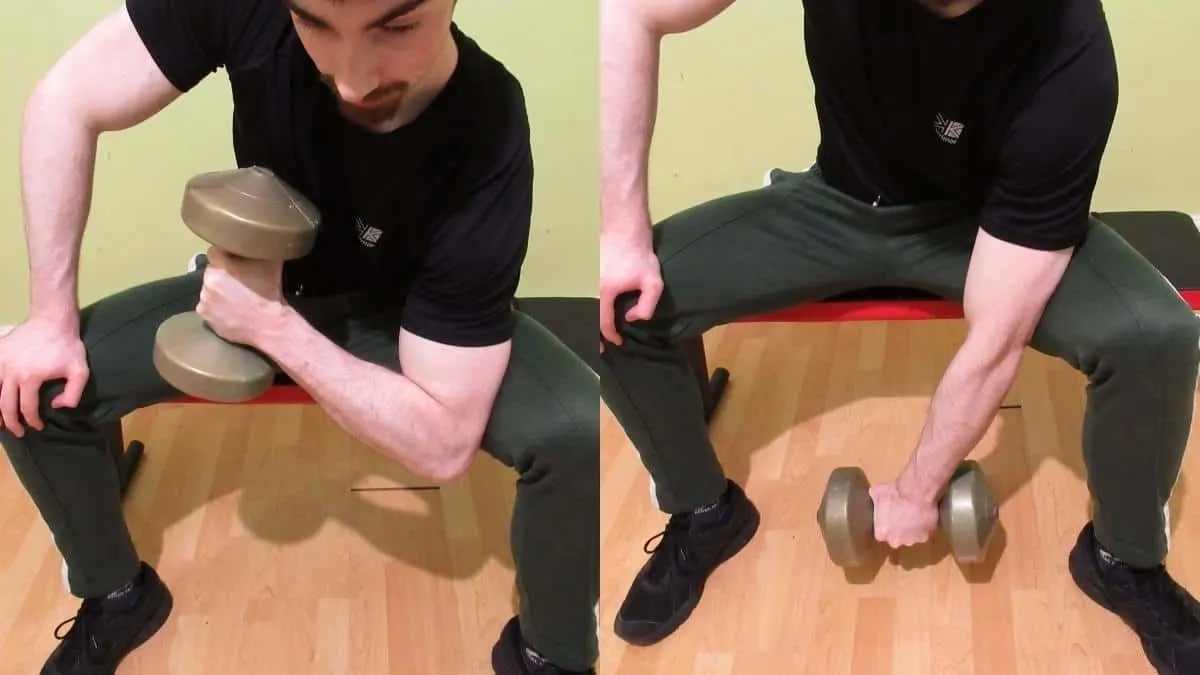The biceps function to supinate the forearms and flex the elbows. Knowing this fact, we change our grip to preferentially target our brachialis and brachioradialis. Since these two muscles only perform elbow flexion and can’t supinate the forearm, performing hammer concentration curls will ensure that they receive maximum tension because we’ll be curling with a neutral grip.
This guide explains the correct hammer curl form as well as the main advantages of including this variation of concentration curls in your workout routine.
Related Exercise: Hammer spider curl
Concentration hammer curl exercise details
- Main Muscles: Biceps brachii, brachialis, brachioradialis
- Secondary Muscles: Forearm extensors, forearm flexors
- Exercise Type: Strength
- Exercise Mechanics: Isolation
- Difficulty Level: Beginner
- Equipment Needed: Dumbbell
How to do hammer concentration curls
- Sit on a weight bench with your knees apart.
- Hold a dumbbell with a neutral grip, and then brace your upper arm against the inside of your thigh.
- Allow your elbow to fully extend. This is the starting position.
- Curl the dumbbell toward your shoulder by flexing your biceps.
- Keep curling until your forearm and bicep make contact.
- Squeeze your arms as your biceps become fully contracted.
- Lower the weight back down under control until your elbow is completely extended.
- Repeat for 3-4 sets of 8-15 reps.
Concentration hammer curl advantages
Like kettlebell hammer curls, the concentration hammer curl is rarely performed these days because people naturally gravitate toward more convenient versions of the exercise. Yet, the movement offers some brilliant bicep-building benefits that you shouldn’t overlook if you’re in pursuit of more muscular arms.
Creates a strong peak contraction
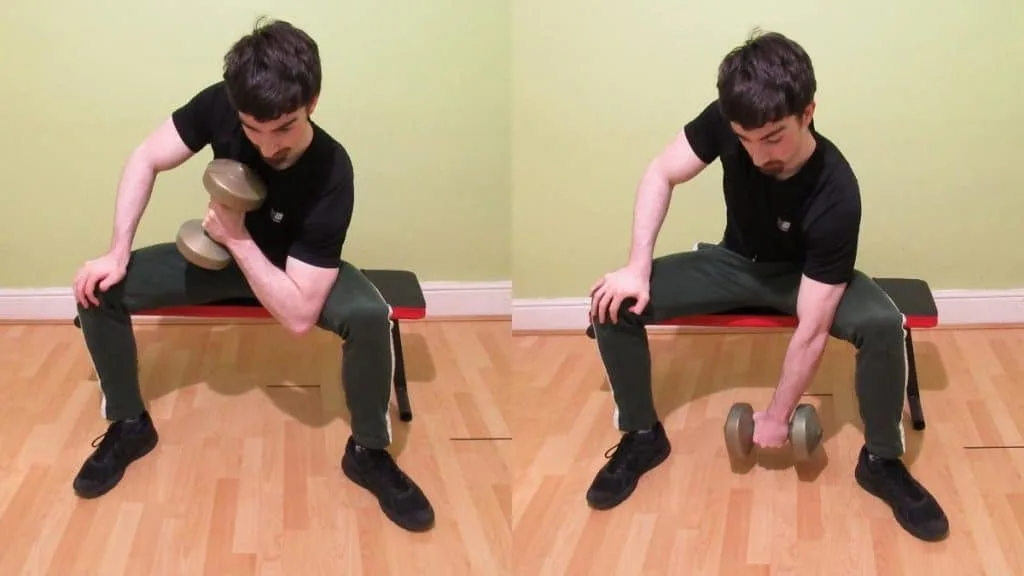
Concentration hammer curls create an extremely intense peak contraction because the exercise is hardest when your biceps are at their most contracted. This results in a potent muscle pump due to the accumulation of lactic acid in the blood. [1]
For this reason, it’s important to squeeze your biceps and brachioradialis forcefully as you lift the weight. Try and hold the contraction for a second or two so that you can build strength in this shortened muscle position. Then, once you get used to contracting your biceps properly, you can perform your reps more explosively because you’ll naturally have developed a better mind muscle connection by practicing the extended contractions.
You can perform it anywhere
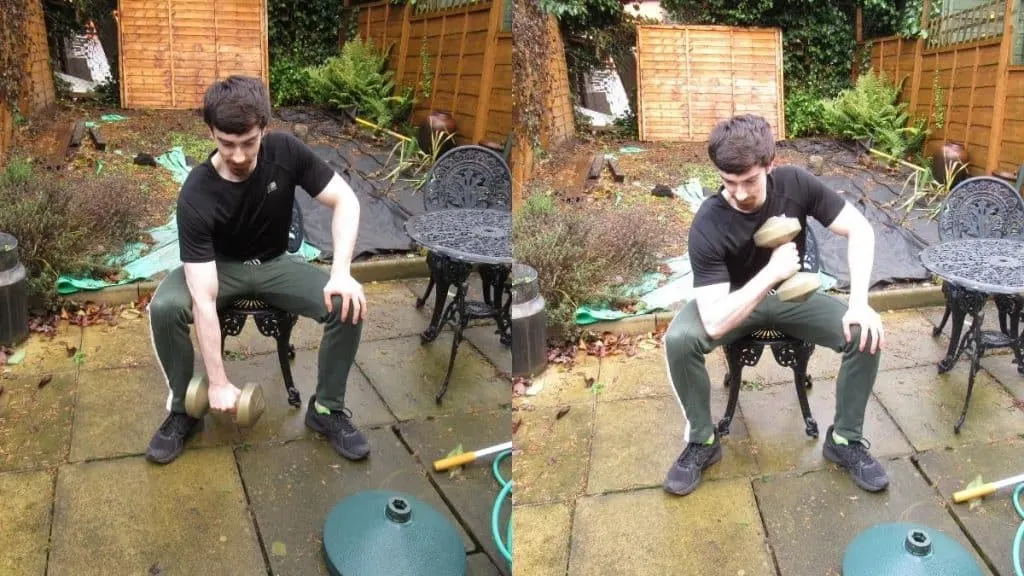
Hammer concentration curls require three things; a dumbbell, a seat, and a spare five minutes. Therefore, they’re a great exercise to perform if you train at home and have limited equipment because you don’t even need a bench to do them—you can just sit on the edge of the sofa with a dumbbell.
Compare this to using the hammer curl machine, which requires a highly specific piece of equipment, and you can see why concentration hammer curls are remarkably convenient for building your arms. Using simple exercises like this one makes it much easier to stick to your routine if you have to change gyms (which often have different machines) or if the gyms are closed altogether.
Conducive to maintaining good form
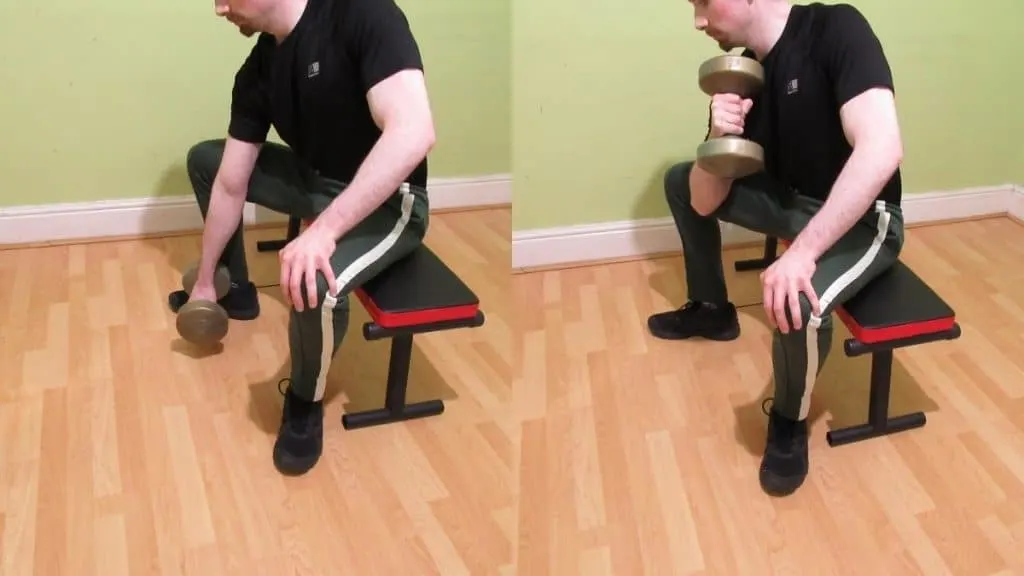
While the in and out hammer curl is a fantastic exercise when performed correctly, it’s all too easy for ego lifters to cheat the weight up with their shoulders, legs, back, and hips. This kind of sloppy form not only reduces the stimulation of the target muscles, but it also leads to injuries that result from lifting weights that are too heavy for your biceps and its surrounding connective tissue. [2]
Hammer concentration curls, on the other hand, make it easy to maintain the correct lifting form because your upper arm is securely braced against your thigh during the exercise. As a result, your biceps, brachialis, and brachioradialis are forced to do the vast majority of the lifting, which means that the tension is going exactly where you want it to.
Concentration hammer curl variations
The seated concentration hammer curl is the version that we recommended performing the most because bracing your arm against your leg really allows you to isolate your biceps and brachioradialis. However, if you’re confident in your ability to use the proper lifting technique, then these two old-school variations of the hammer concentration curl will provide comparable results.
Bent over hammer curls
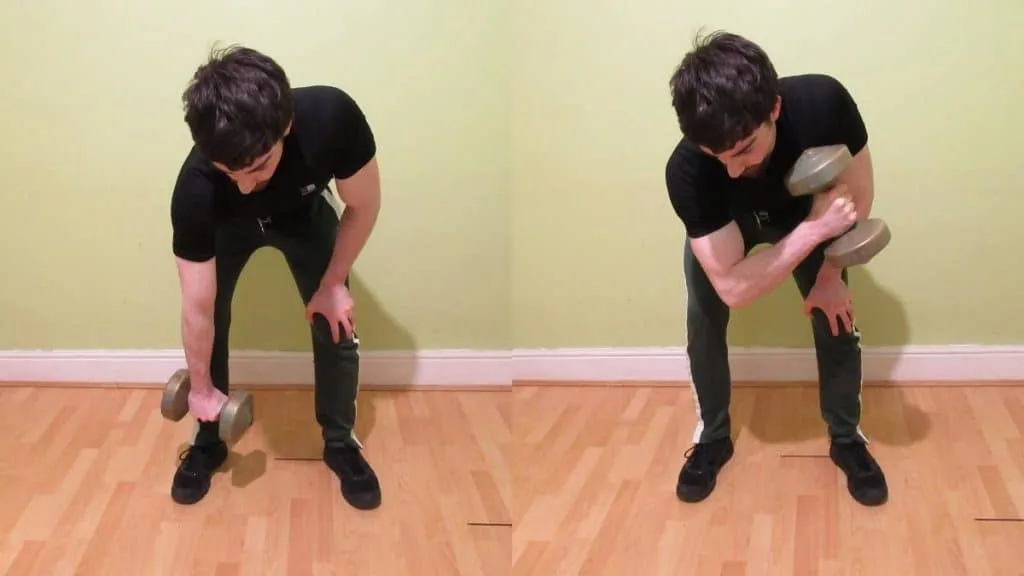
Bent over hammer curls have the same resistance curve as the barbell concentration curl, which is to say they’re most challenging when your biceps are most contracted.
To perform them, bend over at the waist so that your torso is completely flat. Then, with a dumbbell in your hand, let your arm hang so that it’s fully extended. From there, you simply curl the weight toward your shoulder and squeeze your forearms and biceps forcefully.
Avoid doing this particular exercise if you have a bad back. Bending over like this is fine for most healthy people, but such torso positing will still tax your spinal erectors to a certain degree.
Two arm concentration hammer curl
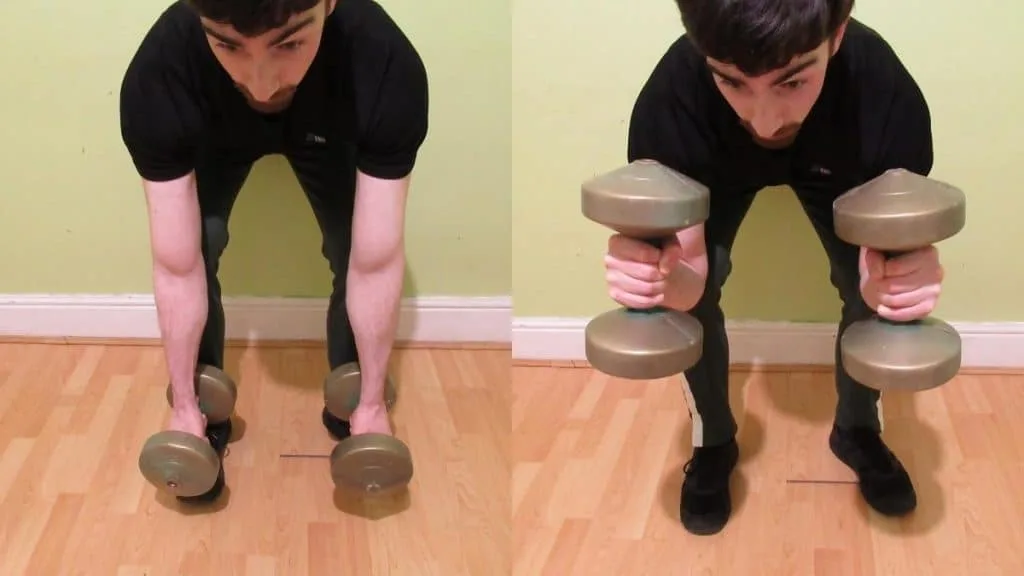
If you want to blast your biceps in a short amount of time, then this is the variation for you.
Begin by holding two dumbbells with a neutral grip. Then, bend over at the waist and brace the backs of your elbows against your knees. Let your elbows fully extend, and then curl the weights toward your shoulders. Squeeze your arms as hard as you can, then lower the dumbbells under control until your elbows are fully locked out.
You can also do standing cable concentration curls if you want to train your biceps with constant tension.
Concentration curl vs hammer curl
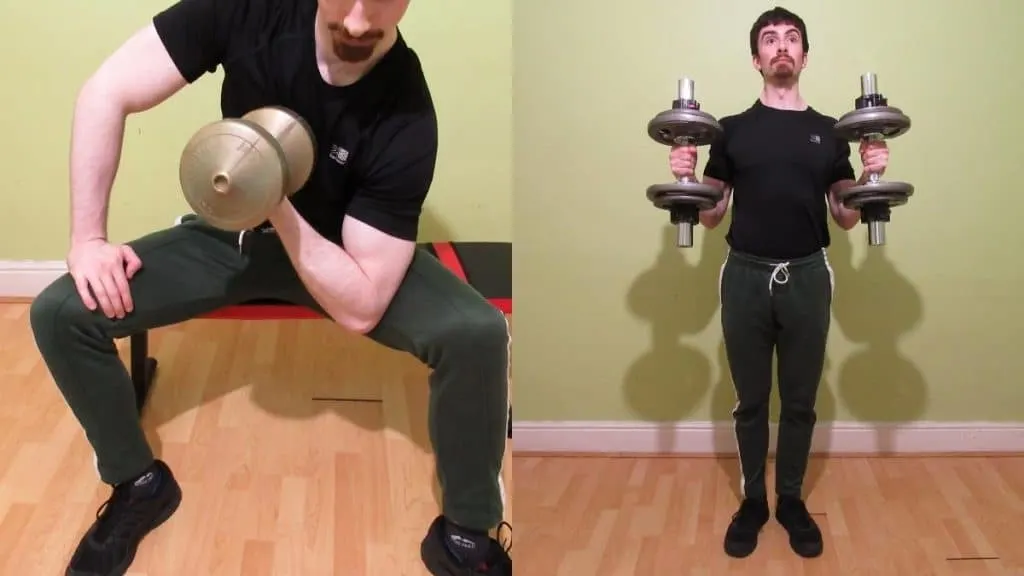
In this quick hammer curl vs concentration curl comparison, you’ll learn which movement is best for you, depending on your goals. Of course, since these exercises emphasize different muscles, you may want to include both within your workout routine (not necessarily on the same day) for the best results.
- Hammer curls are better for forearm (brachioradialis) development.
- Hammer curls are better for the brachialis because they put your biceps at a mechanical disadvantage, which forces your brachialis to do more work.
- Concentration curls are better for bicep development because they train the two main bicep functions—forearm supination and elbow flexion. Hammer curls only work elbow flexion.
- You can lift heavier on hammer curls because your brachioradialis is more active.
- If you can only do one exercise, pick the hammer curl because it works more muscles.
Are concentration hammer curls worth it?
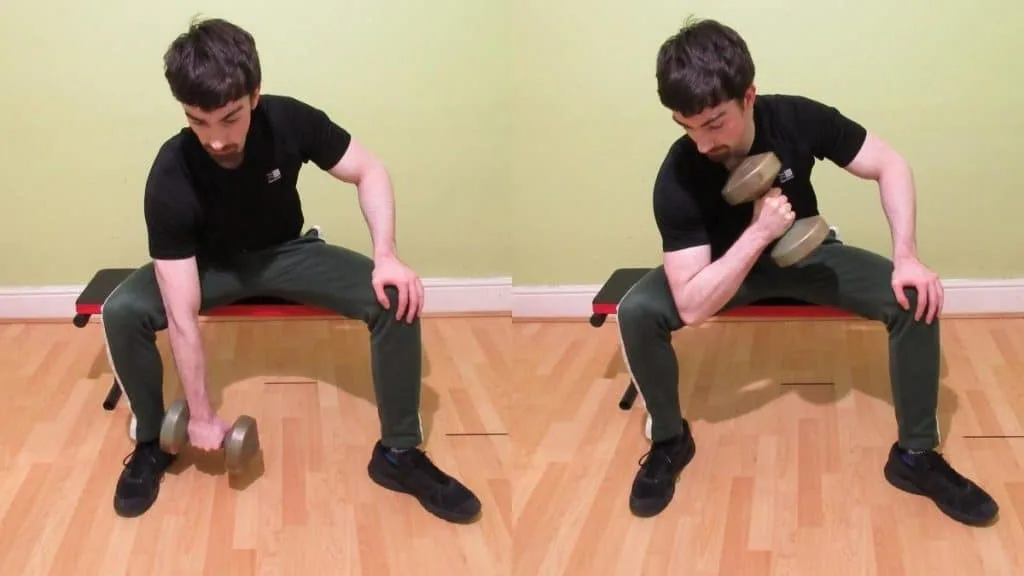
Hammer concentration curls are well worth your time and energy if you’re seeking increased size and strength in your biceps, brachialis, and brachioradialis. More so than the regular hammer curl, it’s easier to keep tension on the target muscles with the concentration version because you can brace your arm against your leg. This extra stability helps you to isolate your arms more effectively.
Moreover, you can do the concentration hammer curl virtually anywhere as long as you have access to a dumbbell. So if you like sticking to your routine even when you can’t get to the gym, exercises like concentration hammer curls are particularly convenient because they don’t require any fancy equipment.
References
- Sahlin, K. (1986). Muscle fatigue and lactic acid accumulation. Acta Physiologica Scandinavica. Supplementum, 556, 83–91. https://pubmed.ncbi.nlm.nih.gov/3471061/
- Aasa, U., Svartholm, I., Andersson, F., & Berglund, L. (2016). Injuries among weightlifters and powerlifters: a systematic review. British Journal of Sports Medicine, 51(4), 211–219. https://doi.org/10.1136/bjsports-2016-096037

